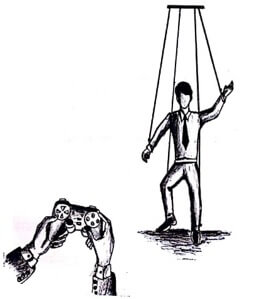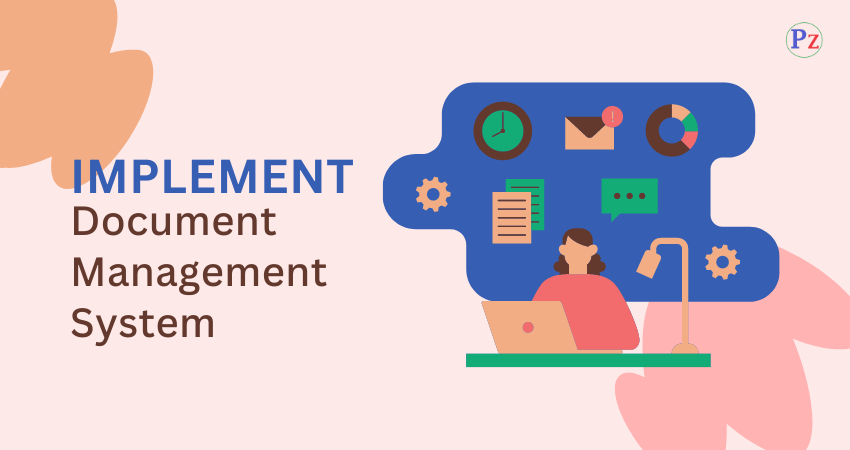Meaning
It is one of the managerial functions like planning, organizing, staffing and directing. It is an important function because it helps to check the errors and to take the corrective action so that deviation from standards are minimized and stated goals of the organization are achieved in a desired manner.
Definition
According to Koontz and D Donnell– controlling is the measuring and correcting of activities of subordinates to ensure that events conform to plans. Actual activities conform to the planned activities.
“Managerial control implies measurement of accomplishment against the standard and the correction of deviations to assure attainment of objectives according to plans.”

Characteristic/ Nature of control
- Control is a continuous process
- Control is a management process
- Control is forward looking
- Control compares actual performance with planned performance
- Control point out the error in the execution process
- Control helps in achieving standard
- Pervasive function
- Leads to post-mortem of past events
- Action oriented
- Involves measurement and universal
- Control involves measurement
- The essence of control is action
- Control is an integrated system
Objectives of controlling
- To make effective plans
- To make sure that organizational activities are consistent
- To make organization efficient
- To provide feedback on project status
- To aid in decision making
Importance of controlling
- Helps in achieving objectives
- Efficient use of resources
- Facilitates decision making
- Improves employee morale
- Helps in achieving better conditions
- Helps in better planning
Control process in management
- Set objectives and Establishing standards
- Measuring performance
- Comparison of actual performance with standards’
- Feedback and Correcting deviations
| (a) Set objectives and The Establishment of Standards | (b) Measurement of Performance | (c) Comparing Measured Performance to Standards | (d) Feedback and Taking Corrective Action |
1.Set objectives and establishing standards
Standards are criteria against which results are measured. They are norms to achieve the goals. Standards are usually measured in terms of output.
- Time standards
- Cost standards
- Income standards
- Market share
- Productivity
- Profitability
Product leadership standards: These indicate what must be done to attain such a position.
Employee attitude standards: These standards indicate what types of attitudes the company managers should strive to indicate in the company’s employees.
Social responsibility standards: Such as making contribution to the society.
Standards reflecting the relative balance between short and long range goals.
Measurement involves comparison between what is accomplished and what was intended to be accomplished. The performance can be measured by the following steps:
(a) Strategic control points
(i) Income
(ii) Expenses
(iii) Inventory
(iv) Quality of the product
(v) Absenteeism
(vi) Ratio analysis.
The measurement of performance against standards should be on a forward looking basis so that deviations may be detected in advance by appropriate actions.
This is the active principle of the process. The previous two, setting the goals and the measurement format are the preparatory parts of the process. It is the responsibility of the management to compare the actual performance against the standards established.
The performance evaluated can be for the organization as a whole or for some individuals working within the organization. In essence, standards are the yardsticks that determine whether organizational performance is adequate or inadequate
The final element in the process is the taking corrective action. Measuring and comparing performance, detecting shortcomings, failures or deviations, from plans will be of no avail if it does point to the needed corrective action.
Corrective action is managerial activity aimed at bringing organizational performance up to the level of performance standards.
Types of control system
- Based on element
a. Strategic Control
b. Operational control
c. Feed back control - Based on the stages
a. Feed forward control
b. Concurrent control
1. Based on Element:
a. Strategic control:
⇒ Strategic control is the process of taking into accounts the changing planning premises, both external and internal to the organization, on which the strategy is based; continuously evaluating the strategy as it is being implemented; and taking corrective actions to adjust the strategy to the new requirements.
⇒ This process is necessary because strategy formulation is based on certain assumptions. There is a time lag between strategy formulation and its implementation, some of these assumptions may not hold good, either fully or partially.
b. Operational control:
⇒ Operational control is concerned with action or performance and is aimed at evaluating the performance of the organization as a whole or its different components- strategic business units, divisions, and departments.
⇒ Operational control is used by almost every organization in some form or the other. This control can be exercised at different stages of work performance.
c) Feedback controls:
⇒ They measure activities that have already been completed. Thus corrections can take place after performance is over.
⇒ Example – feedback from facilities engineers regarding the completed job .
2. Based on the stages
a) Feed forward controls:
⇒ They are preventive controls that try to anticipate problems and take corrective action before they occur.
⇒ Example – a team leader checks the quality, completeness and reliability of their tools prior to going to the site.
b) Concurrent controls:
⇒ They (sometimes called screening controls) occur while an activity is taking place.
⇒ Example-the team leader checks the quality or performance of his members while performing.
Methods of controlling
A. Traditional Methods
- Personal observation
- Statistical analysis
- Special reports and analysis
- Operational audit
- Control through costing
- Break even analysis
- Budget and budgetary control
B. Modern Methods:
- PERT
- CPM
- ROI
- Responsibility accounting
- Human asset accounting
- MIS
- Management audit
- TQM
- Six sigma
Barriers for controlling
⇒ Control activities can create an undesirable overemphasis on short-term production as opposed to long- term production.
⇒ Control activities can increase employees’ frustration with their jobs and thereby reduce morale. This reaction tends to occur primarily where management exerts too much control.
⇒ Control activities can encourage the falsification of reports.
⇒ Control activities can cause the perspectives of organization members to be too narrow for the good of the organization.
⇒ Control activities can be perceived as the goals of the control process rather than the means by which corrective action is taken.
Requirement of effective control systems
- Feed back
- Objective and measurable
- Suitable
- Prompt reporting
- Forward looking
- Point out exception
- Intelligible
- Motivation
- Understandable and economical
- Control by function and factors
- Strategic points control
- Flexible
- Indicative as well as suggestive
- Correct action at correct time
| Read More Topics |
| Definition and meaning for impression management |
| Organizational behavior modifications |
| State the factors influencing perception |




